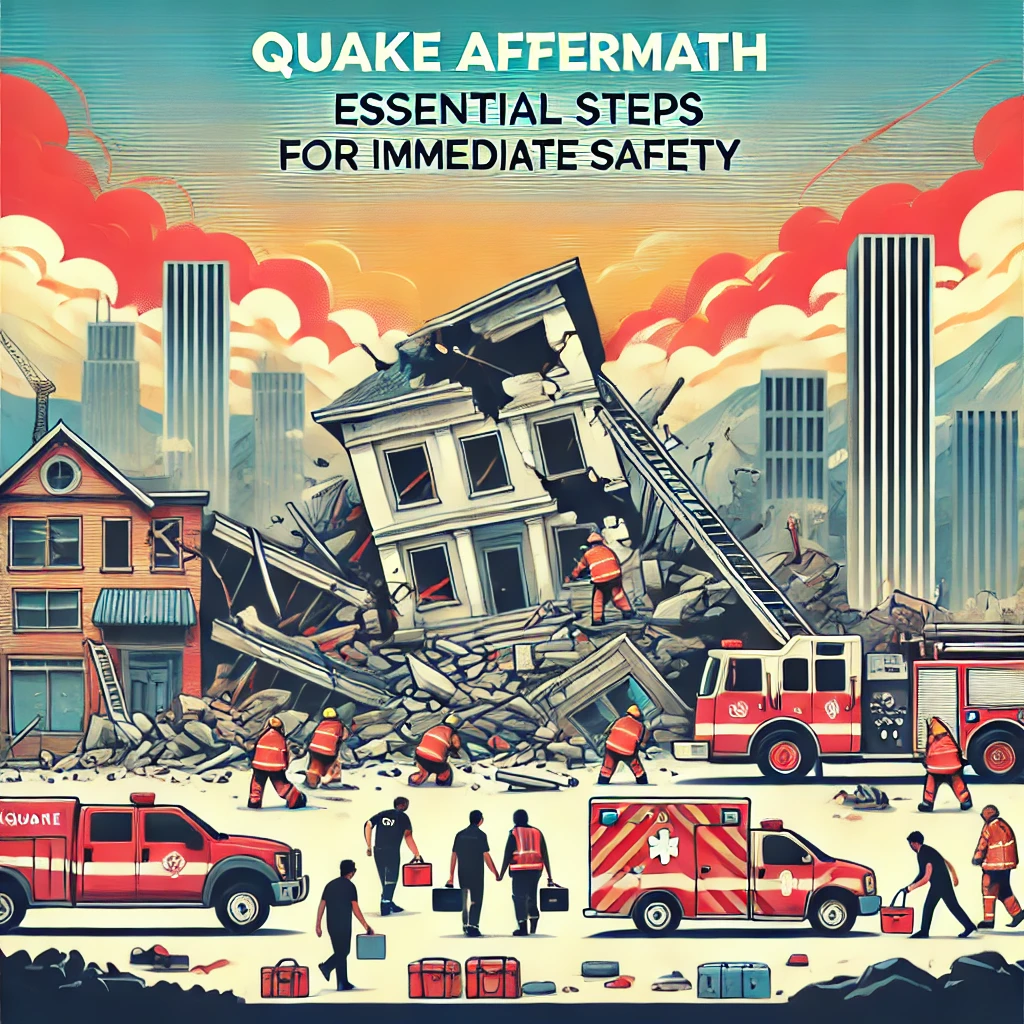
- October 1, 2024
- 8:09 pm
- No Comments
When the earth begins to rumble and the ground beneath us shakes, it can be a harrowing experience. Earthquakes strike without warning, often leaving chaos in their wake. Knowing how to respond in those first few moments can make all the difference in ensuring your safety and the safety of those around you. In this article, we’ll guide you through the essential steps to take immediately after an earthquake, helping you to navigate the confusion and secure your surroundings.
Finding Your Bearings: Assessing Immediate Surroundings
In the immediate aftermath of an earthquake, your first priority is to get a clear understanding of your surroundings. Take a moment to breathe deeply and steady your nerves. Quickly survey your immediate area for any immediate dangers such as fallen objects, broken glass, or exposed electrical wiring. If you’re indoors, look out for structural damage like cracks in walls or ceilings, which might signify further risk of collapse.
Once you’ve assessed the immediate dangers, pinpoint the safest route to exit your current location if necessary. Avoid elevators and instead opt for stairs, but only if they’re deemed safe. Remember, aftershocks are common, and moving to a more secure location may be crucial for your safety. If you’re outdoors, steer clear of buildings, trees, and utility poles that might topple over.
Check on those around you. A quick headcount and a verbal check-in can provide assurance and identify anyone who might need assistance. If someone is injured, administer first aid if you’re able, while keeping in mind the potential for aftershocks. Every second counts, but calm and calculated actions can prevent further harm.
Secure and Steady: First Moves for Post-Quake Safety
With your immediate surroundings assessed, the next step is to secure yourself and your loved ones. If you’re indoors, find a sturdy piece of furniture such as a table to get underneath, protecting yourself from potential falling debris. In the absence of such furniture, crouch in an inside corner of the building, away from windows and heavy objects that could cause injury.
Switch off utilities cautiously to prevent fires, gas leaks, and electrical hazards. Locate your home’s gas valve and turn it off if you detect a gas leak (you might smell gas or hear a hissing noise), but only if it is safe to do so. Similarly, shut off electricity if you notice damaged wiring or sparks to prevent the risk of electrical fires.
Communication is key in the chaos following a quake. Use your phone wisely; text messages are often more reliable than calls in overloaded networks. Contact emergency services if necessary and connect with family members to confirm their safety. Keep a battery-powered or hand-crank radio handy to stay updated on official information and instructions from local authorities. This will help you make informed decisions in the critical moments following the disaster.
In the wake of an earthquake, every action you take can significantly influence your safety and the well-being of those around you. By taking a moment to assess your surroundings, securing your environment, and maintaining clear communication, you can navigate the immediate aftermath with a sense of control and preparedness. Remember, staying calm and informed is your best defense in these challenging situations. With these essential steps in mind, you can face the quake’s aftermath with strength and resilience.